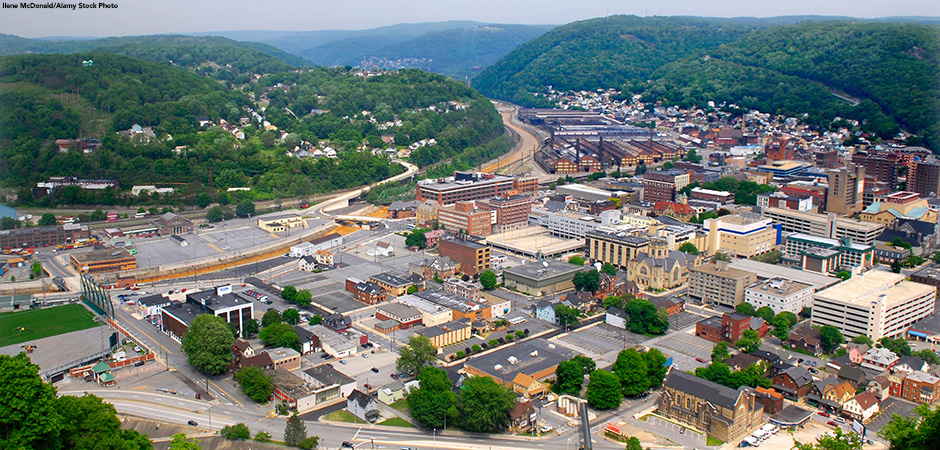
On May 31, 1889, the South Fork Dam in southwest Pennsylvania collapsed. The waters of Lake Conemaugh burst from behind the earthen dam with the force of Niagara Falls. When the 40-foot wall of water reached Johnstown, located in a valley 14 miles below the dam, it had already carried debris, people, and animals from smaller towns and farms further upriver. The damage caused by this flood is still remembered in Johnstown over a century later. And the history of the flood recovery marked an important moment for the American Red Cross.
The Catastrophe at Johnstown
Earlier that day, the Stonycreek River and the Little Conemaugh River which surround Johnstown had overflowed their banks due to typical spring floods. As a result, many of the 10,000 people living in Johnstown had already moved their things into the upper stories of their homes. But when the half-mile-long flood wave roared into the town, it destroyed everything. About 20 million tons of water and floating debris destroyed homes, stores, carriages, and even locomotives. The broken remains slammed into the Pennsylvania Railroad Company’s Stone Bridge. The mountain of debris was around 30 feet high and stretched over 30 acres. Tragically, it then caught fire. The death toll from the flood and resulting fire reached 2,209. Almost 100 entire families died, and 1,600 homes were destroyed. Survivors searched for their wives, husbands, children, and other family members at towns and morgues down the Conemaugh River.
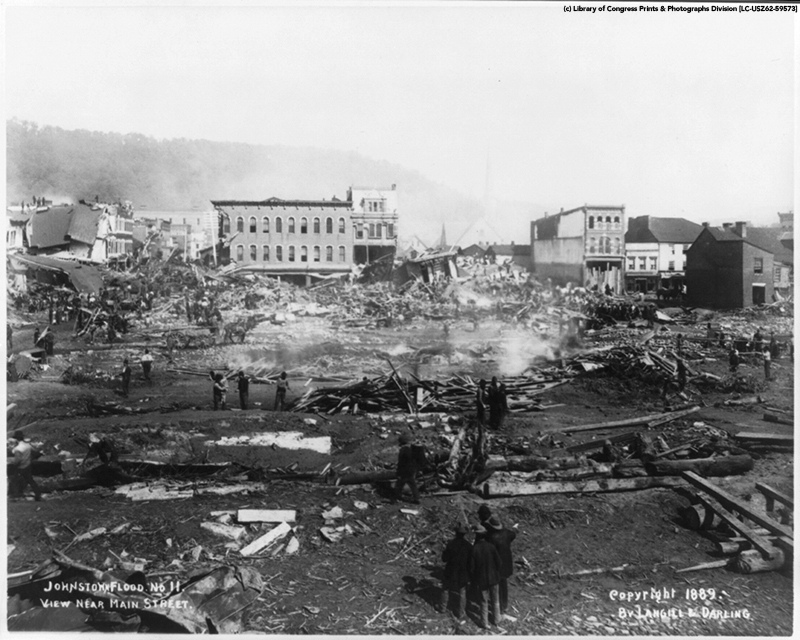
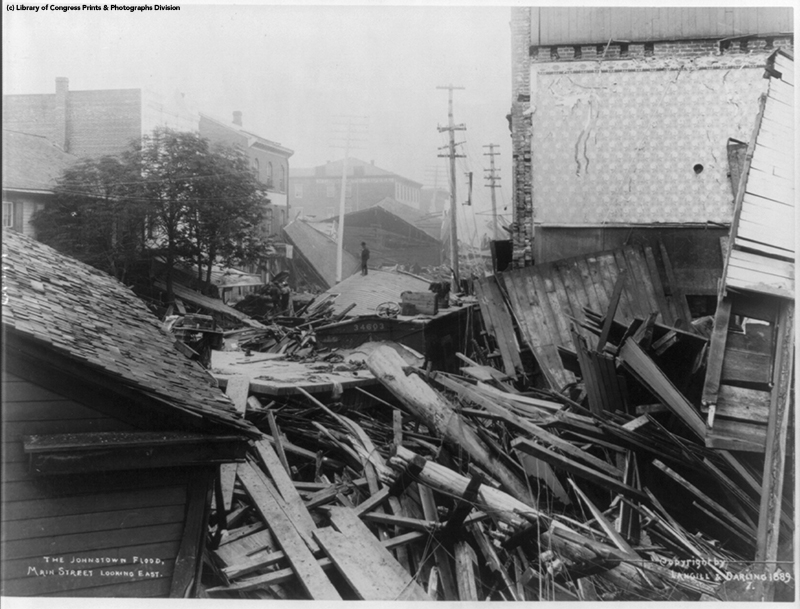
Help on the Way
People nearby immediately responded with assistance. Newspapers throughout the country carried the story of the massive flood. Following the news, Americans and individuals from 18 countries donated more than $3.7 million. (In today’s dollars that would equal over $100 million in donations!) Food and medical supplies poured in. Doctors arrived to help the survivors. Companies sent lumber to help rebuild homes and stores. The most important organization to help Johnstown recover, however, was the American Red Cross.
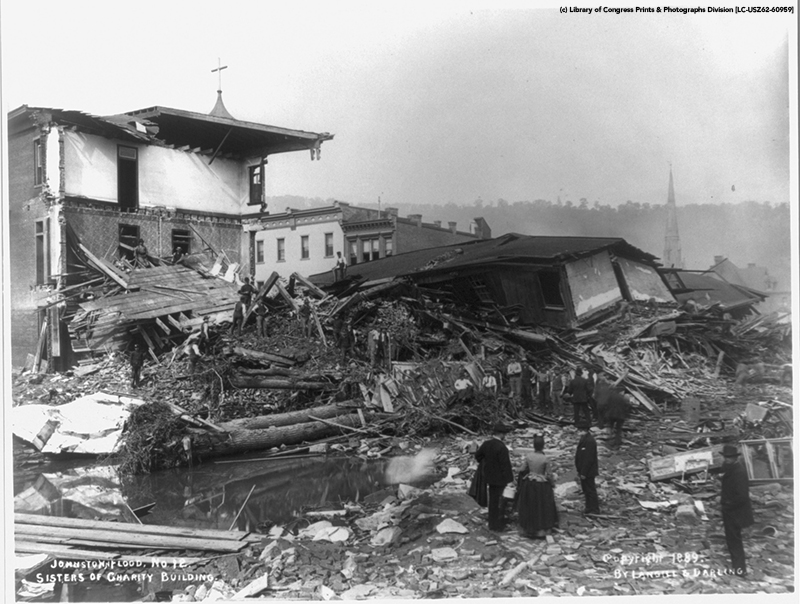
The American Red Cross Responds
The American Red Cross was founded in 1881 by Clara Barton. Her mission for the American Red Cross was to help people not only during war and on battlefields, but also to provide relief in peacetime disasters. The American Red Cross was a relatively new organization when it responded to the Johnstown tragedy. Five days after the Johnstown flood in 1889, Barton and her American Red Cross team arrived from Washington, D.C. This was the first time the organization had provided natural disaster assistance. The Philadelphia Red Cross chapter also arrived quickly to help the survivors with medical needs.
Barton stayed in Johnstown for nearly five months. During that time, the American Red Cross helped about 25,000 people. The agency provided supplies and furniture to flood survivors. It built Red Cross hotels for merchants and other homeless people to stay in while their businesses and houses were restored. The organization also constructed warehouses to store all the supplies coming in from around the country. A month after the flood, businesses along Johnstown’s Main Street were able to reopen because of the aid of the American Red Cross.
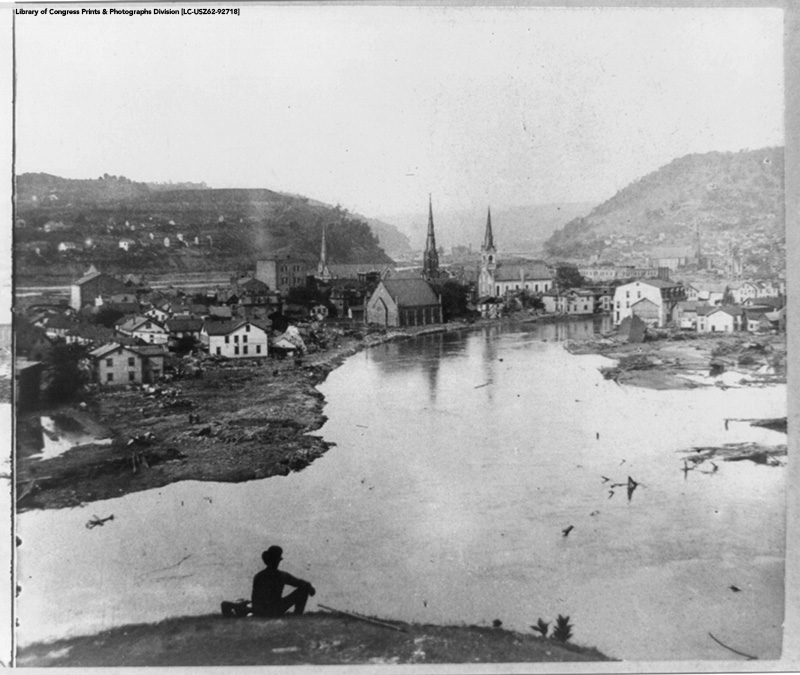
Causes and Results of the Flood
The South Fork Dam was an earthen dam, originally built in 1852 to collect water for the Pennsylvania Canal. The dam was engineered to be able to release water safely if necessary. After several years of poor maintenance, part of the dam washed away in 1862.
Seventeen years later, the dam was purchased and modified by Benjamin Ruff. He turned Lake Conemaugh and the surrounding grounds behind the dam into the South Fork Fishing and Hunting Club. This became a resort for wealthy patrons, including millionaires Andrew Carnegie and Henry Frick. The safety measures on the original dam were not put in place, however. As a result, on the morning of May 31, 1889, officials frantically tried to relieve pressure on South Fork Dam. They watched later that afternoon as the waters of Lake Conemaugh tore through the dam.
Although some survivors of the Johnstown Flood sued the South Fork Fishing and Hunting Club, the disaster was ruled as an act of God instead of human made. The survivors received no payment for damages. Public outcry from these court decisions caused American law to change. Today, people can be held legally responsible for consequences that arise from their actions, whether they intended harm or not.
Johnstown experienced several other major floods, but they were not caused by the South Fork Dam, which was never rebuilt. The St. Patrick’s Day Flood in 1936 caused several deaths and about $41 million in damages. This disaster led Johnstown to deepen the surrounding river channels and to build river walls.
